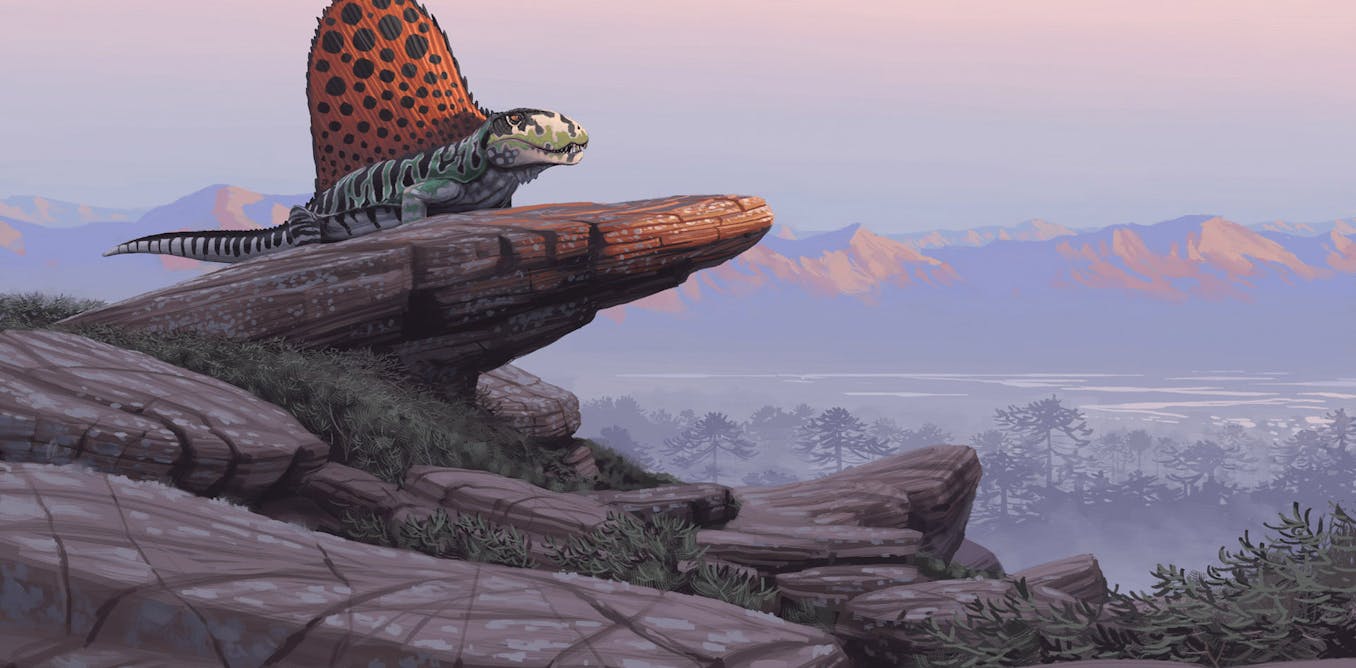
- Select a language for the TTS:
- UK English Female
- UK English Male
- US English Female
- US English Male
- Australian Female
- Australian Male
- Language selected: (auto detect) - EN
Play all audios:
Emma Dunne receives funding from the European Research Council through its Horizon 2020 programme.
Over 750,000 square kilometres of Amazon rainforest have been cleared since 1970 – a fifth of the total. As a result, many of the animals that live there are threatened with extinction. But
this isn’t the first time the Earth has seen its rainforests shrink. Toward the end of the Carboniferous period, around 307m years ago, the planet’s environment shifted dramatically, and its
vast tropical rainforests vanished.
Palaeontologists have previously struggled to work out how this rainforest collapse affected the first ancient vertebrate animals that lived there – the early tetrapods. This is because the
fossil record for this time is patchy and incomplete. My colleagues and I have now published new research that reveals how the collapse initially caused the number of species to fall,
affecting water-loving amphibians the most. But this event ultimately paved the way for the ancestors of modern reptiles, mammals and birds – known as the amniotes – to flourish and spread
across the globe.
About 310m years ago, long before the first dinosaurs and mammals evolved, North America and Europe lay in a single landmass at the equator covered by dense tropical rainforests, known as
the “coal forests”. The warm, humid climate and rich vegetation provided an ideal habitat for amphibian-like early tetrapods. This allowed them to quickly diversify into a variety of
species.
Toward the end of the Carboniferous period, the number of tetrapod species had begun to increase greatly. But then the climate became much drier, causing a mass extinction of many species in
the dominant plant groups, such as horsetails and club mosses.
Although the collapse of the rainforests was a catastrophic event for plants, how it affected early tetrapods has remained largely uncertain. Previous analyses suggest that the number of
early tetrapod species increased through the collapse of the rainforests, but that the resulting fragmented landscape isolated different groups from each other, a pattern known as endemism.
The problem with this research is that the early tetrapod fossil record is heavily biased. Much of what we know about early tetrapod evolution comes from extensively-studied fossil sites in
midwestern and southern US, western Canada, and central Europe. This means our picture of early tetrapod evolution is biased around how much effort has been put into finding and identifying
fossils from these areas.
As with the dinosaurs, the reptile-like tetrapods of the Permian period, such as the sail-backed Dimetrodon, have captivated palaeontologists for many years. In contrast, the animals and
landscapes of the Carboniferous period are relatively understudied. Palaeontologists and geologists are collaborating to close these gaps in our knowledge. Together, these biases limit our
knowledge of early tetrapod diversity and can drastically affect analyses.
To address this problem, my colleagues and I turned to the Paleobiology Database. This database is accessible to the public and is updated continuously by palaeobiologists with the location
and age of all fossil finds from across the world. Instead of simply counting the species we have fossils for, we applied innovative statistical methods to the entire tetrapod fossil record.
Our results, published in the Proceedings of the Royal Society B, reveal that tetrapod species diversity decreased after the rainforest collapse, with amphibians suffering the greatest
losses. The drier climate would have reduced the amount of suitable habitats for amphibian species, which are dependent on wet environments and must return to water to spawn.
Instead of evidence for endemism, we found that tetrapod species that survived the rainforest collapse began to disperse more freely across the globe, colonising new habitats further from
the equator. Many of these survivors were early amniotes, such as diadectids and synapsids, animals that had considerable advantages over amphibians. They were generally larger so could
travel longer distances, and because they laid eggs they were not confined to watery habitats.
While the fossil record of the Carboniferous and early Permian Periods is strongly biased, new statistical methods that address these biases have allowed us to examine the true impact of the
rainforest collapse on early tetrapods. We now know that the event was crucial in paving the way for amniotes, the group that ultimately gave rise to the dinosaurs and eventually modern
reptiles, mammals and birds, to become the dominant group of land vertebrates.






